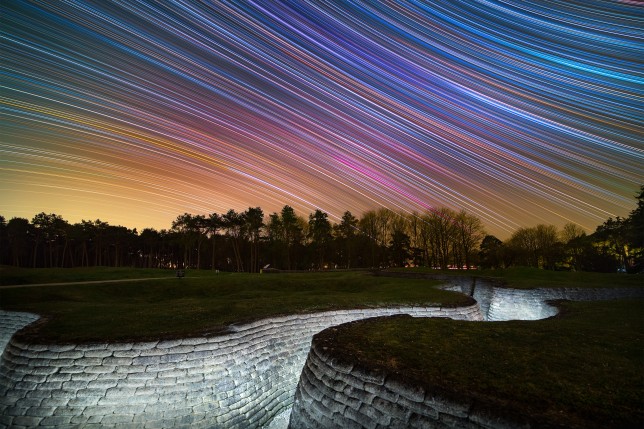The shortlist for this year’s Astronomy Photographer of the Year Award has been revealed and, as expected, features a dazzling array of constellations, galaxies and other cosmic phenomena.
Awe-inspiring scenes of the Milky Way, vibrant star trails racing across the night sky and spiral galaxies are just some of the breathtaking night sky views on display.
Run by the Royal Observatory Greenwich, the award has been marking the best in astronomical photography for the past 15 years.
In 2023, the competition received more than 4,000 entries from passionate amateur and dedicated professional photographers from 64 countries across the globe.
Shortlisted images from this year’s competition include star trails over the fWorld War One trench memorial in Vimy, northern France, the Milky Way over an abandoned diamond processing plant in Namibia, and gas giant Jupiter flanked by two of its moons, Io and Europa.
One of the astronomical highlights this spring was the amazing auroral activity. The Northern Lights were seen throughout the UK and Ireland, and one shortlisted image shows the Great Pollet Sea Arch, Ireland, silhouetted against a vibrant yellow and red aurora.
An expert panel of judges from the worlds of art and astronomy will pick the winners of the competition’s nine categories and two special prizes.
The overall winner will be announced on September 14, and the winning images from each category will be displayed in an exhibition at the National Maritime Museum from September 16, alongside a selection of exceptional shortlisted images.
The best will also feature the competition’s official coffee table book, but for now you can take a moment to feast your eyes on the selection below.
Emerald Roots © Lorenzo Ranieri Tenti)
Nebulae of the Small Magellanic Cloud © Jonathan Lodge)
Curtain of Light © Andreas Ettl)
Coppet in Vaud, Switzerland. Here, the stars have been removed from the image in order to focus on the delicate nebulous structures (Picture: Jellyfish Nebula © Peter Larkin)
Cassinified Pluto © Sergio Díaz Ruiz)
MORE : Nasa’s Hubble telescope spots another ‘jellyfish’ galaxy 700,000,000 light-years away
MORE : Nasa’s James Webb telescope identifies massive galaxy 25,000,000 light-years away
Get your need-to-know
latest news, feel-good stories, analysis and more
This site is protected by reCAPTCHA and the Google Privacy Policy and Terms of Service apply.











































